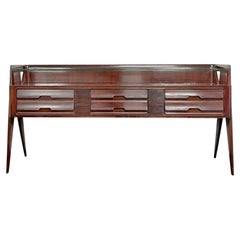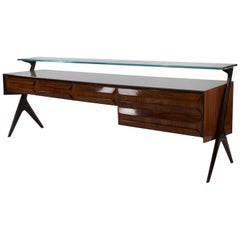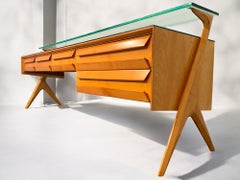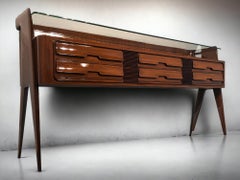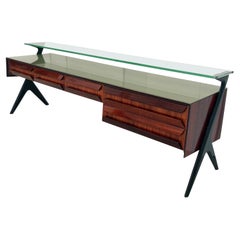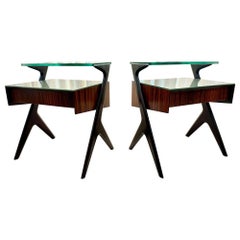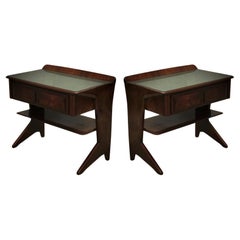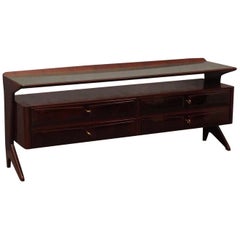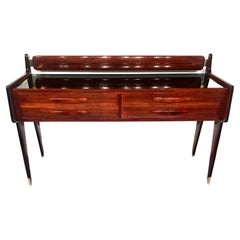Plinio Dassi
Vintage 1950s Italian Modern Side Tables
Metal
Vintage 1950s Italian Mid-Century Modern Sideboards
Glass, Palisander
Vintage 1950s Italian Mid-Century Modern Sideboards
Crystal
Vintage 1950s Italian Mid-Century Modern Sideboards
Maple, Teak
Vintage 1950s Italian Mid-Century Modern Sideboards
Crystal
Vintage 1950s Italian Mid-Century Modern Night Stands
Glass, Mirror, Walnut
Vintage 1950s Italian Mid-Century Modern Credenzas
Glass, Wood
Vintage 1950s Italian Mid-Century Modern Night Stands
Glass, Walnut
Vintage 1950s Italian Mid-Century Modern Commodes and Chests of Drawers
Glass, Walnut
Recent Sales
Vintage 1950s Italian Mid-Century Modern Commodes and Chests of Drawers
Brass
Vintage 1950s Italian Mid-Century Modern Sideboards
Brass
Vintage 1950s Italian Mid-Century Modern Night Stands
Crystal
20th Century Italian Side Tables
Marble
Vintage 1950s Italian Mid-Century Modern Sideboards
Marble, Brass
20th Century Italian Mid-Century Modern Sideboards
Marble
Vintage 1950s Italian Mid-Century Modern Sideboards
Glass, Birch
Vintage 1950s Italian Mid-Century Modern Desks and Writing Tables
Brass
Vintage 1950s Italian Mid-Century Modern Sideboards
Glass, Birch
Vintage 1950s Italian Mid-Century Modern Sideboards
Marble
Vintage 1940s Italian Modern Desks
Brass
Vintage 1950s Italian Mid-Century Modern Sideboards
Crystal
Vintage 1950s Italian Mid-Century Modern Credenzas
Marble, Brass
Vintage 1950s Italian Mid-Century Modern Beds and Bed Frames
Crystal
Vintage 1950s Italian Mid-Century Modern Wardrobes and Armoires
Brass
Mid-20th Century Italian Mid-Century Modern Sideboards
Crystal
Vintage 1950s Italian Mid-Century Modern Sideboards
Glass, Wood, Maple
Mid-20th Century Italian Mid-Century Modern Night Stands
Crystal
Mid-20th Century Italian Mid-Century Modern Sideboards
Birch, Glass, Wood
People Also Browsed
2010s Italian Modern Wall Lights and Sconces
Brass
21st Century and Contemporary Italian Mid-Century Modern Wall Lights and...
Brass, Aluminum, Metal
21st Century and Contemporary German Commodes and Chests of Drawers
Plywood
21st Century and Contemporary Italian Art Deco Wall Lights and Sconces
Brass
2010s South African Minimalist Night Stands
Poplar, Burl
2010s Italian Modern Chandeliers and Pendants
Metal, Brass
21st Century and Contemporary Italian Mid-Century Modern Table Lamps
Brass
21st Century and Contemporary Swedish Mid-Century Modern Table Lamps
Textile
Vintage 1950s Italian Mid-Century Modern Desks
Brass
Vintage 1970s Italian Coffee and Cocktail Tables
Walnut
Vintage 1950s Italian Mid-Century Modern Chairs
Velvet, Teak
Vintage 1950s Italian Mid-Century Modern Dining Room Tables
Brass
21st Century and Contemporary French Brutalist Night Stands
Oak
Vintage 1950s Italian Mid-Century Modern Dry Bars
Mahogany
Vintage 1950s Italian Console Tables
Wood
2010s Italian Mid-Century Modern Wall Lights and Sconces
Brass
Plinio Dassi For Sale on 1stDibs
How Much is a Plinio Dassi?
Vittorio Dassi for sale on 1stDibs
Collectors of vintage mid-century modern furniture will find that the work of Italian designer Vittorio Dassi is elegant and sculptural, brimming with all of the clean, angular lines and pleasing symmetry associated with the best of the era’s offerings. While Dassi's name is less known to enthusiasts of the period’s furniture than the likes of Ico and Luisa Parisi, Franco Albini and other leading lights of mid-20th century Italian design, his case pieces, tables and seating will prove no less worthy of hunting down at today's flea markets and online marketplaces.
Wood was Dassi's preferred material — he favored rosewood, mahogany, walnut and other species for his covetable desks and wall units, which frequently featured decorative flourishes such as glass inlays, while a sideboard or buffet’s fronts might boast hand-carved geometric cutouts in lieu of brass door handles.
While little is known about Dassi's early life, it is believed that his career in furniture design began in 1940 at his family's company Dassi Mobili Moderni, in Lissone, Italy. Shortly thereafter, he took over managing the company from his father.
While Dassi produced dry bars and other case pieces during the 1950s that featured the motifs and ornament that are today attributed to the Art Deco movement, he created sumptuous mahogany nightstands topped with black glass and minimalist teak coffee tables that better represented the forward-looking spirit of mid-century modernism. His wall units of the era for Mobili Cantù are works of art — crafted in walnut and featuring birch veneers and high-gloss lacquer finishes as well as a single door front decorated with an abstract painting or otherwise provocative illustration, these structures would undoubtedly prove quite impressive to the likes of Poul Cadovius and George Nelson.
Dassi often collaborated with Italian architect, editor and furniture designer Gio Ponti. Ponti designed thousands of furnishings and products — from cabinets, mirrors and chairs to ceramics and coffeemakers — and his buildings, including the brawny Pirelli Tower (1956) in his native Milan, and the castle-like Denver Art Museum (1971), were erected in 14 countries. A collaboration between Dassi and Ponti of note is the pair’s work on the Hotel Royal in Naples — Ponti was commissioned to design the hotel and he partnered with Dassi to design the hotel's furnishings.
Today, Dassi Mobili Moderni S.R.L. is still in operation in Lissone.
Find vintage Vittorio Dassi furniture on 1stDibs.
A Close Look at Mid-century Modern Furniture
Organically shaped, clean-lined and elegantly simple are three terms that well describe vintage mid-century modern furniture. The style, which emerged primarily in the years following World War II, is characterized by pieces that were conceived and made in an energetic, optimistic spirit by creators who believed that good design was an essential part of good living.
ORIGINS OF MID-CENTURY MODERN FURNITURE DESIGN
- Emerged during the mid-20th century
- Informed by European modernism, Bauhaus, International style, Scandinavian modernism and Frank Lloyd Wright’s architecture
- A heyday of innovation in postwar America
- Experimentation with new ideas, new materials and new forms flourished in Scandinavia, Italy, the former Czechoslovakia and elsewhere in Europe
CHARACTERISTICS OF MID-CENTURY MODERN FURNITURE DESIGN
- Simplicity, organic forms, clean lines
- A blend of neutral and bold Pop art colors
- Use of natural and man-made materials — alluring woods such as teak, rosewood and oak; steel, fiberglass and molded plywood
- Light-filled spaces with colorful upholstery
- Glass walls and an emphasis on the outdoors
- Promotion of functionality
MID-CENTURY MODERN FURNITURE DESIGNERS TO KNOW
- Charles and Ray Eames
- Eero Saarinen
- Milo Baughman
- Florence Knoll
- Harry Bertoia
- Isamu Noguchi
- George Nelson
- Danish modernists Hans Wegner and Arne Jacobsen, whose emphasis on natural materials and craftsmanship influenced American designers and vice versa
ICONIC MID-CENTURY MODERN FURNITURE DESIGNS
- Eames lounge chair
- Nelson daybed
- Florence Knoll sofa
- Egg chair
- Womb chair
- Noguchi coffee table
- Barcelona chair
VINTAGE MID-CENTURY MODERN FURNITURE ON 1STDIBS
The mid-century modern era saw leagues of postwar American architects and designers animated by new ideas and new technology. The lean, functionalist International-style architecture of Le Corbusier and Bauhaus eminences Ludwig Mies van der Rohe and Walter Gropius had been promoted in the United States during the 1930s by Philip Johnson and others. New building techniques, such as “post-and-beam” construction, allowed the International-style schemes to be realized on a small scale in open-plan houses with long walls of glass.
Materials developed for wartime use became available for domestic goods and were incorporated into mid-century modern furniture designs. Charles and Ray Eames and Eero Saarinen, who had experimented extensively with molded plywood, eagerly embraced fiberglass for pieces such as the La Chaise and the Womb chair, respectively.
Architect, writer and designer George Nelson created with his team shades for the Bubble lamp using a new translucent polymer skin and, as design director at Herman Miller, recruited the Eameses, Alexander Girard and others for projects at the legendary Michigan furniture manufacturer.
Harry Bertoia and Isamu Noguchi devised chairs and tables built of wire mesh and wire struts. Materials were repurposed too: The Danish-born designer Jens Risom created a line of chairs using surplus parachute straps for webbed seats and backrests.
The Risom lounge chair was among the first pieces of furniture commissioned and produced by celebrated manufacturer Knoll, a chief influencer in the rise of modern design in the United States, thanks to the work of Florence Knoll, the pioneering architect and designer who made the firm a leader in its field. The seating that Knoll created for office spaces — as well as pieces designed by Florence initially for commercial clients — soon became desirable for the home.
As the demand for casual, uncluttered furnishings grew, more mid-century furniture designers caught the spirit.
Classically oriented creators such as Edward Wormley, house designer for Dunbar Inc., offered such pieces as the sinuous Listen to Me chaise; the British expatriate T.H. Robsjohn-Gibbings switched gears, creating items such as the tiered, biomorphic Mesa table. There were Young Turks such as Paul McCobb, who designed holistic groups of sleek, blond wood furniture, and Milo Baughman, who espoused a West Coast aesthetic in minimalist teak dining tables and lushly upholstered chairs and sofas with angular steel frames.
Generations turn over, and mid-century modern remains arguably the most popular style going. As the collection of vintage mid-century modern chairs, dressers, coffee tables and other furniture for the living room, dining room, bedroom and elsewhere on 1stDibs demonstrates, this period saw one of the most delightful and dramatic flowerings of creativity in design history.
